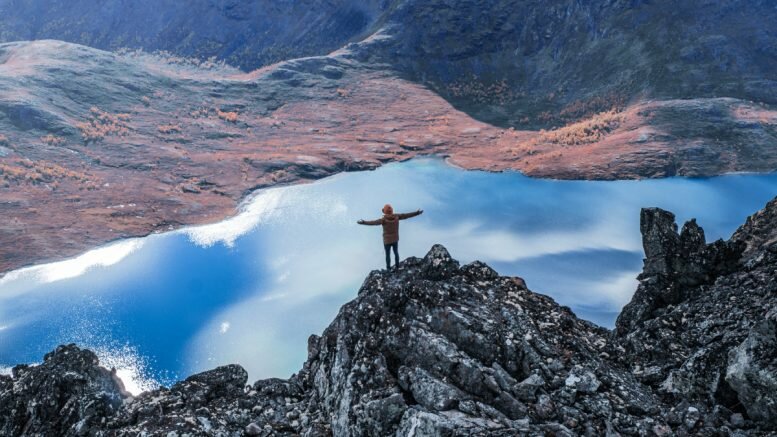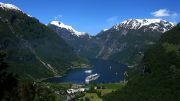If you have ever dreamt of hiking in the spectacular Norwegian mountains, it is essential to know what you are up against. Luckily, the famous Norwegian Mountain Code helps you do just that!
The Norwegian Mountain Code, or “Fjellvettreglene” in Norwegian, has been prevalent for almost 70 years. In fact, it was first released in 1952 and has been central to amateurs and eager mountaineers alike ever since.
Only in 2016 did the Norwegian Red Cross and The Norwegian Trekking Association update the Mountain Code in order to reflect modern-day society, which now includes more focus on planning ahead.
The code is targeted towards both native Norwegians and tourists and is meant to help people navigate the mountains safely and responsibly.
The Norwegian Mountain Code has become more than just a set of guidelines for hiking. For several years, it has been an integral part of Norwegian culture and society. Continue reading for the revised 2016 rules!
1. Plan your trip and inform others of where you plan to go
It is always important to plan your trip based on the ability of your group members. It is also recommended that you have sufficient information and knowledge about the area in order to know about alternative routes, should it be necessary.
2. Adapt your trip to reflect both ability and conditions
Continuously assess the conditions and adapt your plans accordingly. Weather can change quickly, and respecting nature is therefore fundamental! Furthermore, it is important to be honest with yourself about your ability when planning a trip – don’t set out on a long hike without any prior experience. Remember that there is always safety in numbers, so you might be more comfortable hiking with other people.
3. Be mindful of weather and avalanche warnings
You can find weather and avalanche warnings online, and it is important that you utilize these and assess the area that you will be hiking in. The conditions can be found on yr.no, storm.no, and varsom.no.
4. Be prepared for bad weather and cold temperatures, even on shorter trips
Weather shifts quickly in the mountains, and it is essential to dress according to weather and conditions. Always bring extra clothes, as well as equipment that might be needed for your chosen terrain. It is also a good idea to bring extra food in case you or someone else needs it.
5. Bring the necessary equipment in order to help yourself and others
This varies according to season and what terrain you are in, but generally, it is always a good idea to bring a first aid kit. If you are hiking in the winter, it can be useful to bring equipment that can help you through the night if necessary such as a windsack, sleeping bags, sleeping pads, and a shovel.
6. Take safe routes. Recognize avalanche terrain and unsafe ice
The most important thing you can do in order to prevent an avalanche is to take safe routes. Read up on what terrains are more prone to avalanches and be mindful of the ice conditions when crossing lakes.
7. Use a map and a compass, and always know where you are
Although most of us use our phones, there is not always reception in the mountains. It can be helpful to bring a physical map and compass in case technology fails.
8. Don’t be ashamed to turn around
Reiterating number 2 on the list, it is important to continually assess the conditions and adapt your plans accordingly. There is no shame in turning around or picking a different route!
9. Conserve your energy and seek shelter if necessary
Be mindful of the other people in your group and adapt your speed accordingly. Remember to eat and drink frequently, and seek shelter if necessary.
Source: #Norway Today, #NorwayTodayTravel
Do you have a news tip for Norway Today? We want to hear it. Get in touch at info@norwaytoday.no





Leave a comment